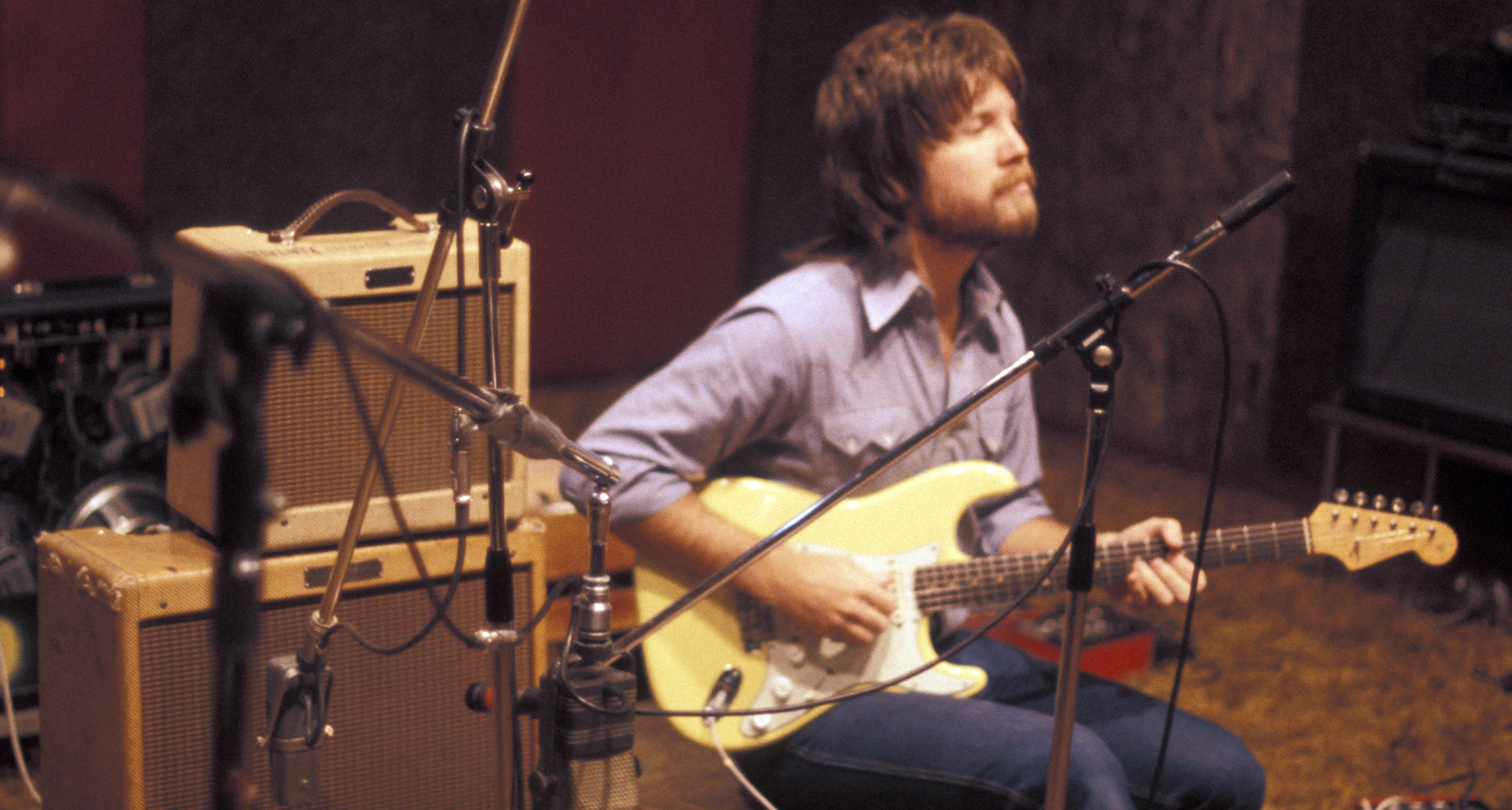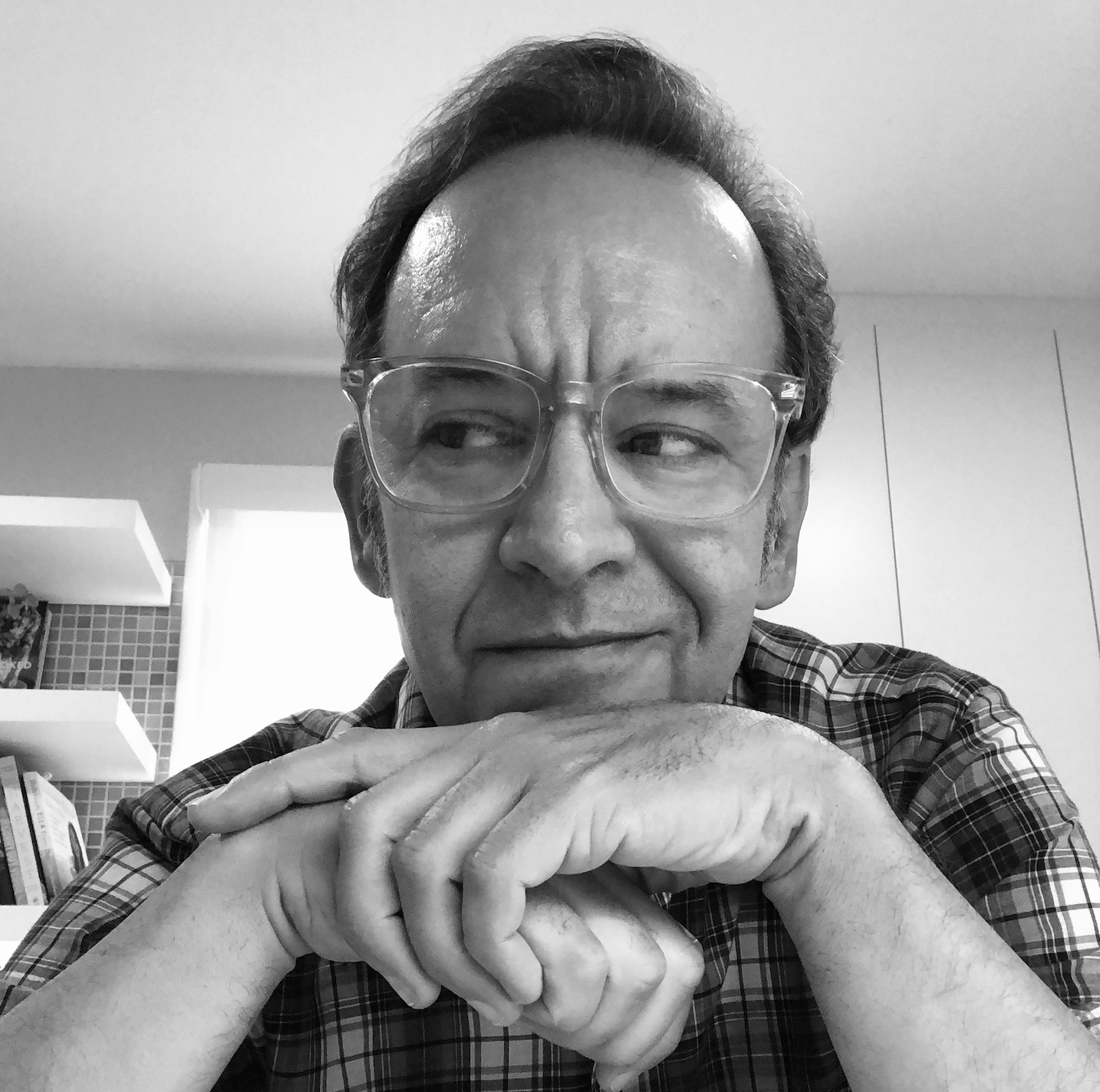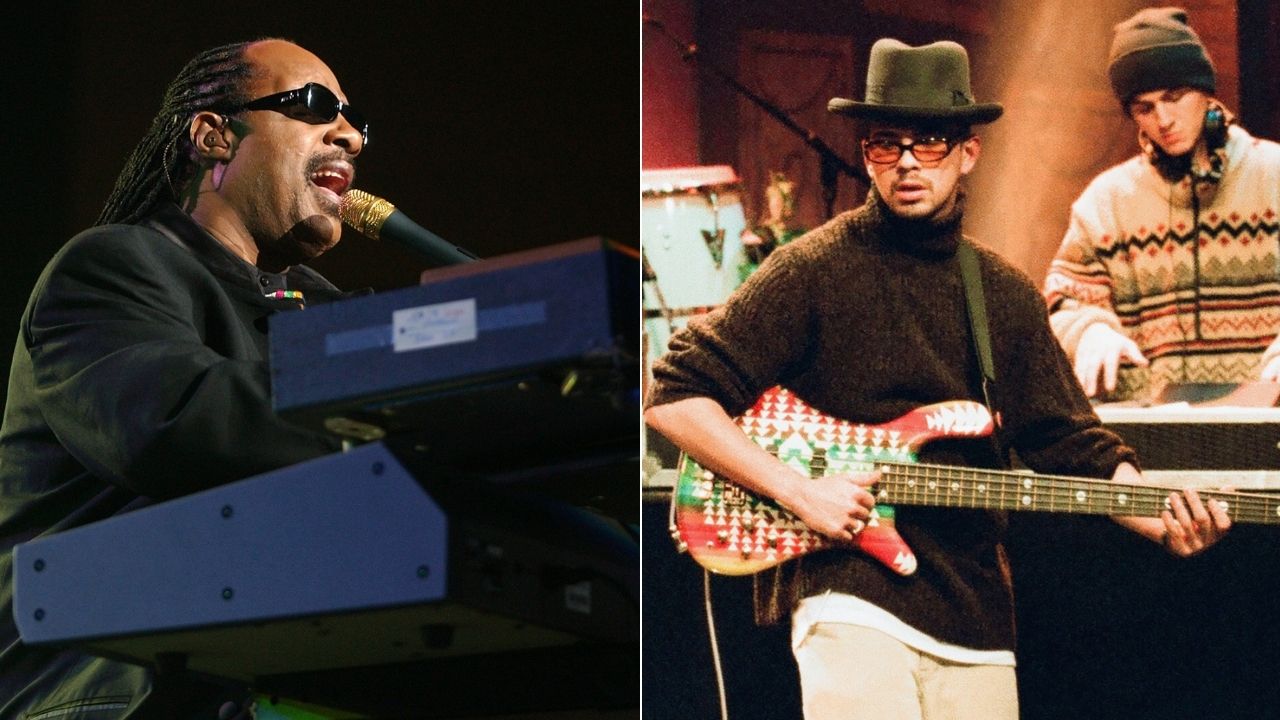“I played poker with Freddie King during one of the tours he did with Eric Clapton. I lost half my tour money!” Session legend George Terry on eating Whoppers with Diana Ross and high times as Eric Clapton’s go-to ’70s six-string lieutenant
George Terry looks back on a decade of hits with the Bee Gees, Barbra Streisand, ABBA, and Diana Ross, and his adventures and misadventures with Slowhand

Islands in the Stream, Voulez-Vous, Guilty, Lay Down Sally. What do these classic hits have in common? They all feature the tasteful guitar playing of George Terry.
Like an East Coast brother of L.A. cats Larry Carlton, Steve Lukather and Dean Parks, “Miami George” had genre-spanning chops, imagination and flair that allowed him to move easily from session to session.
Working at Criteria Studios in Miami, mostly with the successful production team of Barry Gibb, Albhy Galuten and Karl Richardson, Terry built a discography that cut a who’s-who swath through ’70s and ’80s pop and rock.
As if that didn’t keep him busy enough, Terry also was the second guitarist to Eric Clapton. From 1974 to 1978, he toured the world and played on five of Clapton’s studio albums while also contributing as a songwriter and backing vocalist.
Those were transitional years for Clapton, when he was redefining himself as a singer and bandleader, while trying to escape his “Clapton is God” guitar-hero rep.
“Singing and playing guitar is not an easy thing to do,” Terry says. “There’s a syncopation that gets complex while doing both at once. Not to mention getting the lyrics, phrasing and pitch right on the vocal. So in a live performance, I would cover whatever he had trouble doing.”
And Clapton was a generous band leader, letting Terry step out with solos on such tracks as The Core, Next Time and Lay Down Sally.
All the latest guitar news, interviews, lessons, reviews, deals and more, direct to your inbox!
After parting ways with Clapton, Terry plugged back into the studio scene with high-profile work for Diana Ross, Air Supply and Barbra Streisand. He also released a much-overlooked solo album, Guitar Drive, which includes the standout track Let Me Stay, originally written for Clapton’s 461 Ocean Boulevard.
These days, Terry, 74, lives in his native south Florida, where he makes music in his home studio. You can check out what he’s been up to on his website.
Do you remember the first guitar record you heard that really knocked you out?
“I was into the Ventures, as they were an instrumental guitar band and they had Fender guitars on their album covers. Walk, Don’t Run comes to mind as the first Ventures tune I heard, probably when I was 10 or 11.”
Did you do a lot of dissecting of other players’ riffs and licks?
“I played along with the Ventures, as they played the melody of the songs. To me, that was better than learning a guitar solo. Playing the melody for friends and family got them singing along. Nobody had enough attention span to hear a solo.”
How did you break into the session world at Criteria Studios? And was it more appealing than being in a band and touring?
“I was in the musician’s union and would get calls to do various things like play at a party or play on a jingle at the studio, and even play with artists that came into town promoting their new record. I got to play with Neil Diamond, Sonny & Cher and, best of all, Chuck Berry.”
One of your early sessions was with Freddie King. What do you recall about that one?
“With Freddie, I was only doing overdubs. I played poker with him during one of the tours he did with Eric. I lost half my tour money!”
In 1974, you met Eric Clapton in an unusual way.
“I was going to Criteria to play on a jingle, and I saw Eric walking that direction. So I stopped and asked if he wanted a ride.”
How did you come to be part of his band for 461 Ocean Boulevard?
“After giving Eric a ride to the studio, I told him I played with an in-house band that Mack Emerman [who founded Criteria Studios in 1958] let hang out there, so there was a variety of musicians instantly available to help when a producer wanted to try out something on his artist’s recording.
“I told Eric that we usually play for fun, in between being called into sessions, and invited him to join us if he wanted to play a bit or run down a song. He took me up on the offer and we played a few different kinds of grooves, one of them being reggae. Eric liked that, so I gave him Burnin’ by Bob Marley and the Wailers.”
The one with I Shot the Sheriff.
“Yes. For a day or so after that, Eric played the song with us. Tom Dowd went into the control room and listened. Soon after, I learned that Tom had the red ‘Record’ light taken out of the playroom, and that he’d been recording us playing the song.
“Robert Stigwood [Clapton’s manager in the late ’60s/early ’70s] came to the studio and told Eric that he should record the song. Eric sent off for the Tulsa boys – drummer Jamie Oldaker, keyboardist Dick Sims and bassist Carl Radle. When they arrived, the studio band was dismissed.
“That is, everyone except me. We went on to record all the songs that became 461 Ocean Boulevard. After that record was released, Eric asked me to be a member of his band with Jamie, Dick and Carl, who was his Layla bandmate.”
In a Rolling Stone interview, Eric described you as being “a hustler... good for him because left to his own devices, he [Clapton] was very lazy.” Did it feel that way to you?
“I never thought of Eric as lazy. Perhaps more like not wanting to bother with details. I’ve always had to get things done, as soon as a way to do them was presented. Eric didn’t have to hustle as he literally could do things when he felt like doing them.”
Was that an odd role to be in – a session player suddenly responsible for motivating this legendary guitarist?
“Back then, I didn’t think of Eric as legendary. To me, Chet Atkins was legendary.”
You have your first songwriting credit on 461 with Mainline Florida. Did you write it with Eric in mind?
“No; I came up with the melody and lyrics thinking of what living in Florida was all about. So the song is actually about Florida. It was going to be called Mainland Florida, but I thought Mainline Florida was better, as it suggested letting Florida get under your skin and into your blood.”
Was Eric open to hearing material? Did he encourage you to write for him?
“Eric covered a lot of songs, be it old blues tunes or something like I Shot the Sheriff. He liked the riff to Mainline Florida. But his management wasn’t happy with me submitting songs. So Roger Forrester, his manager at the time, told me to keep my song ideas to myself after Lay Down Sally. That never made any sense to me.”
Back then, I didn’t think of Eric as legendary. To me, Chet Atkins was legendary
How was your role in Eric’s touring band different from in the studio? And how would you describe your approach to lead playing versus Eric’s?
“On the tours, I played a few of Eric’s guitar parts so he could concentrate on singing. Layla comes to mind. In the studio I’d play my own parts. Eric was a great rambling guitarist who could play extended solos. I tend to structure my lead solos to be more of a memorable melody, kind of like how a George Harrison solo is.”
When I spoke to Albert Lee about playing with Clapton in the early ’80s, he said that because of Eric’s drinking, he would occasionally have a bad night. But most nights, he’d play brilliantly. Did you have a similar feeling on the road in the ’70s?
“Yes, but it wasn’t limited to liquor, and not always Eric’s doing. We did a show in Australia where someone dosed Eric with LSD, and I had to take over doing a few tunes. In my opinion, Eric actually plays great, even after having a few drinks.”
![[above, from left] Yvonne Elliman, Terry and Clapton on stage in the U.K., July 31, 1976](https://cdn.mos.cms.futurecdn.net/H5c7fY4XCGzjvMBqwbGfc9.jpg)
If there was a bad night, would Eric signal to you to step in more than usual?
“Eric had me step in more than usual at any time. That would mix up how shows went. So, extended versions of songs were done on the fly, as we were playing the show. Eric had bad nights when he had a health issue or didn’t get enough sleep.”
What inspired Lay Down Sally, and what do you recall about the writing process with Eric and Marcy Levy?
“We were on a break in the entertainment room at Olympic Studios in London. They had a Foosball world cup table. Eric was playing, and after a goal he looked over to me and said, ‘Let’s write a song called Lay Down Sally.’ I instantly got to it and came up with a first verse and chorus.
They had a Foosball world cup table. Eric was playing, and after a goal he looked over to me and said, ‘Let’s write a song called Lay Down Sally’
“I had a slow country groove to the melody and lyric. Marcy joined me, and after going over what I had, she said she could come up with some other verses. The next day, she had them – and they were great.
“When I presented the song to Eric and the band, Jamie said, ‘You gotta do it like this,’ and he went right into the train drum groove and tempo. Hearing that, I started a J.J. Cale-type riff, and that was that. We ran down the arrangement and after once or twice through, [producer] Glyn Johns said, ‘Listen to this,’ over the playback.
“He’d recorded it. That became the track. Eric later sang the lead and Marcy and Yvonne Elliman harmonized in the chorus. Eric dubbed in his solo and the song was done. None of us thought it would be the hit it became.”
It looks like in the mid-’70s, the touring schedule with Eric wasn’t that crazy – maybe 30 to 40 dates a year, which left you time for studio work. I’m trying to place the start of your association with the production team of Gibb, Galuten & Richardson. Was it Andy Gibb’s 1977 album, Flowing Rivers?
“A lot of things were done back then. One was a song called Emotion by Samantha Sang. The Bee Gees were on RSO, as was Eric. I believe Robert Stigwood may have had a part in Barry contacting me for studio work. Albhy was around even before Layla was recorded and also when 461 was recorded. I knew Karl from his engineering days at Criteria. We were all friends from that early start and it was always a pleasure to work together.”
Was Barry hands-on with your parts or did he give you freedom?
“He was very open to letting me present my spin on what to play in his songs. If he didn’t like a part I played, he’d offer a suggestion to change it. There was always a method to his madness, and he was always right.”
Did you have a go-to guitar and amp for the clean funky stuff on those late-’70s records?
“I played a Fender Strat that I had modified, through a Fender Super Champ, on ABBA’s Voulez-Vous single and album. It was more disco than funky, but that was the go-to setup.”
Clapton’s 1978 album, Backless, is the last one you worked on. Why did you leave the band?
“I didn’t leave the band. I was one track away from finishing a jazz band project in my home studio, when Roger Forrester called me to leave for a vacation in Spain that would end with us [Clapton’s band] playing a few shows to pay for the vacation.
A guitarist in a rock band needs to contribute even more, as that part makes or breaks the song. In my opinion, AC/DC’s Angus Young did that time and time again
“I told him I’d be able to leave in two days, but he insisted that I leave the next morning. I told him that a day or two of me not being there for the vacation shouldn’t matter, as long as I was there to play the shows.
“After I said that, he told me not to bother coming at all and hung up. I thought he would call back after talking with Eric, but he didn’t. Eric didn’t call me either. That’s what I get for keeping my word and helping a jazz band have a recording they would have never gotten.”
In the early ’80s, thanks to the Barry Gibb association, you played on high-profile records by Diana Ross, Barbra Streisand and Dionne Warwick. What was the challenge of working with divas? Did they have an appreciation for the guitar within a track?
“No challenge for me, as most of my work was with Barry. The only one I got to spend time with was Diana Ross – and Michael Jackson – doing the song Eaten Alive. Diana was very down to Earth. We had Burger King Whoppers in the control room together and talked about the Supremes. She liked the parts I played. Michael said my parts were 'greasy.' I took it as a good thing.”
What makes a great session guitarist? What tools are required that, say, a guitarist in a rock band might not need?
“Every session musician, guitarist or otherwise, has to contribute something to the song. A guitarist in a rock band needs to contribute even more, as that part makes or breaks the song. In my opinion, AC/DC’s Angus Young did that time and time again.”
There are some videos on your YouTube page from your band Mainline Florida, where you’re covering Clapton hits. What was the intention of that band?
“I tried to put together a show that wasn’t just a tribute band. I wanted to present some of my songs along with some I did with Eric in the studio and on stage. I don’t recall one tribute band that has an original member in it.”
Have you had any contact with Eric since the late ’70s?
“Every once in a while I got to jam with the band for an encore.”
What’s your favorite of the George Terry-era Clapton albums?
“No Reason to Cry [1976] is near the top of the list, as it was recorded at the ranch where the Mister Ed TV show was done. I also got to meet Bob Dylan.”
Did you ever meet George Harrison?
“I met George while staying at Eric’s home in England. The band had practice jams of slow blues tunes for over a week. It drove me crazy to do the same thing every day. After more than a week of it, I had a little too much Jack Daniels and went to sleep in the upstairs bedroom. Early the next morning, I woke up to Eric and George playing ukuleles at the foot of my bed. I thought I was dreaming, but the hangover assured me I wasn’t.”
Clapton had his Brownie and Blackie Strats. What was your main guitar during the Clapton era? While we’re at it, what was your main guitar amp?
“I had a Fender Strat that I put together from the best parts of others. It’s the guitar pictured on the cover of my Guitar Drive album. My nickname for it was Frankenstein. Eric and I both had Music Man amps that Leo Fender sent. The 4x12 speaker cabs had baffle changes to 2x12 and were also changed from closed to open back.”
I woke up to Eric and George playing ukuleles at the foot of my bed. I thought I was dreaming, but the hangover assured me I wasn’t
What’s your main guitar these days?
“I have four main electrics and four main acoustics. The electrics are a hardtail Strat, a mahogany Tele, a Gretsch Silver Jet and a White Falcon. The acoustics are a Martin 00028, an engraved chrome Dobro and my Zemaitis 12- and nylon-string guitars.”
What’s your musical life like now?
“I’m in my studio, recording songs. I had some pressed up onto 13-song CDs; the playlists for those are available to hear on the George Terry [YouTube] Topic page.”
Bill DeMain is a correspondent for BBC Glasgow, a regular contributor to MOJO, Classic Rock and Mental Floss, and the author of six books, including the best-selling 'Sgt. Pepper at 50.' He is also an acclaimed musician and songwriter who's written for artists including Marshall Crenshaw, Teddy Thompson and Kim Richey. His songs have appeared in TV shows such as 'Private Practice' and 'Sons of Anarchy.' In 2013, he started Walkin' Nashville, a music history tour that's been the #1-rated activity on Trip Advisor. An avid bird-watcher, he also makes bird cards and prints.












